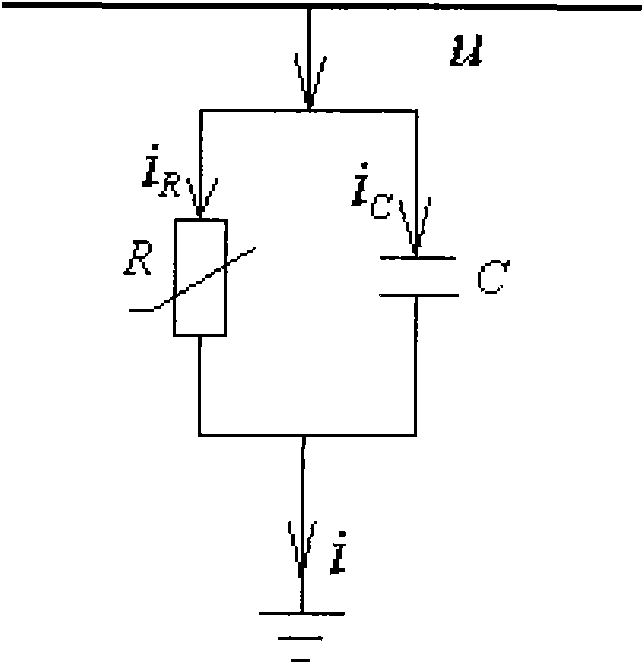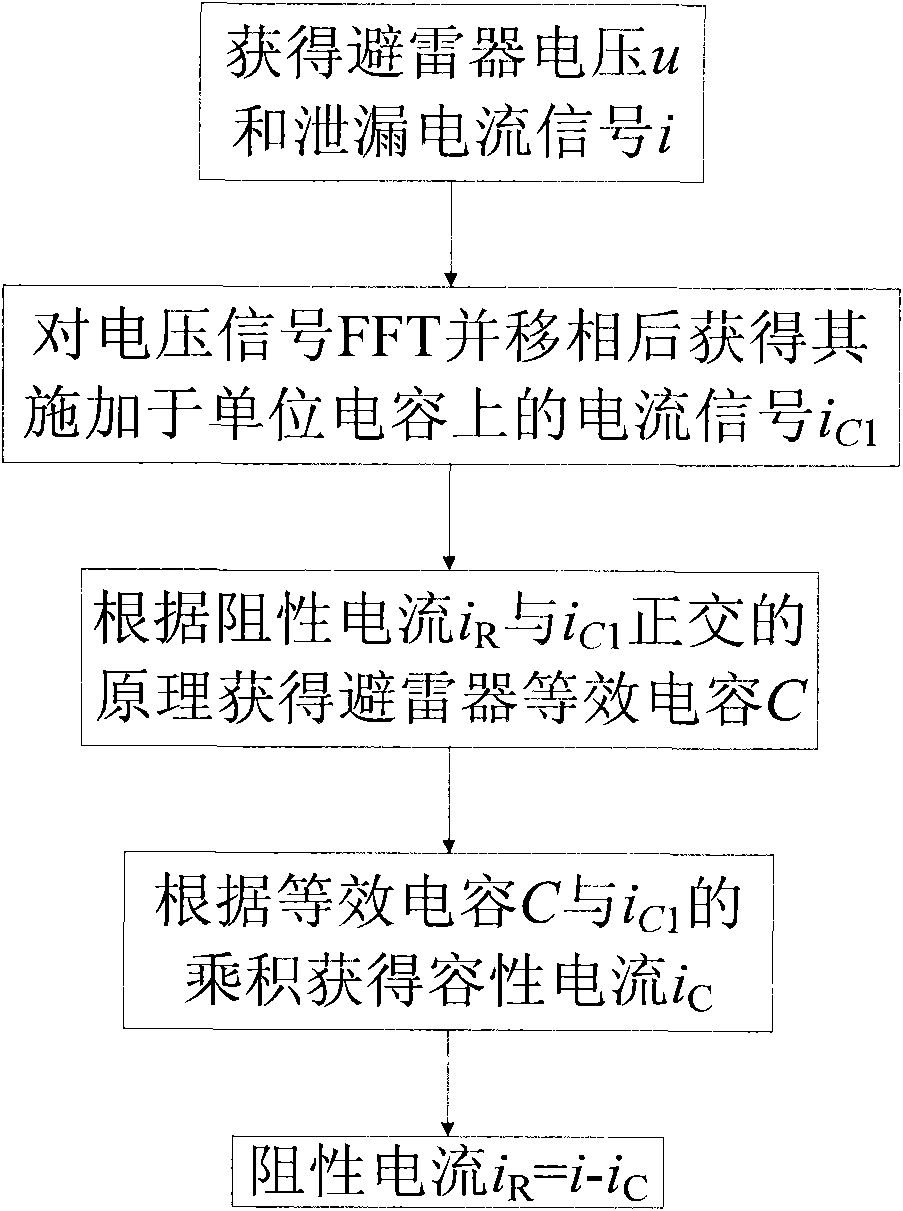Method for extracting resistive current of metal oxide arrester (MOA)
A technology of resistive current and extraction method, which is applied in the direction of measuring current/voltage, instrument, measuring electricity, etc., and can solve problems such as method error
- Summary
- Abstract
- Description
- Claims
- Application Information
AI Technical Summary
Problems solved by technology
Method used
Image
Examples
Embodiment Construction
[0018] When the leakage current flowing through the MOA is less than 1mA, the MOA is in the small current region, and the MOA equivalent circuit model in the small current region is as attached figure 1 shown.
[0019] attached figure 1 R is the non-linear resistance of MOA; C is the dielectric capacitance; i R is the resistive current; i C Is the capacitive current; i is the full current; u is the voltage applied to the arrester.
[0020] Voltage u, full current i, resistive current i R and capacitive current i C Satisfy the following relationship:
[0021] i R = f(u) (1)
[0022] i C = C du dt - - - ( 2 )
[0023] i=i C + i R (3)
[0024] where i R =f(u) is the voltage-current relationship of the non-linear resistor, which is an algebraic relationship.
[0025] Let T be the period of the volta...
PUM
 Login to View More
Login to View More Abstract
Description
Claims
Application Information
 Login to View More
Login to View More - R&D
- Intellectual Property
- Life Sciences
- Materials
- Tech Scout
- Unparalleled Data Quality
- Higher Quality Content
- 60% Fewer Hallucinations
Browse by: Latest US Patents, China's latest patents, Technical Efficacy Thesaurus, Application Domain, Technology Topic, Popular Technical Reports.
© 2025 PatSnap. All rights reserved.Legal|Privacy policy|Modern Slavery Act Transparency Statement|Sitemap|About US| Contact US: help@patsnap.com



